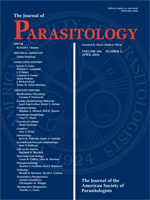The liver fluke Fasciola hepatica (Trematoda: Fasciolidae) causes fascioliasis, which affects mostly domestic ruminants and humans worldwide. This parasite has an Old World origin and was introduced into the New World by European colonizers. Capybara (Hydrochoerus hydrochaeris) is the largest living rodent species, with adults weighing over 60 kg. We report a fascioliasis outbreak caused by F. hepatica that reduced a capybara group from 21 to 2 animals within a 9-mo period. Animal infection and associated lesions were confirmed by postmortem examinations that revealed extensive liver damage associated with the presence of large number of adult and immature forms of F. hepatica. Both macroscopic and microscopic alterations in the liver were compatible with acute fascioliasis, which is characterized by a large parasite burden in the liver. Taxonomic identification of flukes collected from capybara livers were confirmed by molecular methods, which generated a mitochondrial NADH dehydrogenase I (NDI) gene partial sequence that was 100% identical to a F. hepatica NDI sequence from the United Kingdom. This is the first report of deleterious effects caused by F. hepatica in capybaras, highlighting the potential harm caused by this exotic parasite in the capybara.
How to translate text using browser tools
1 April 2018
Lethal Fascioliasis in Capybaras (Hydrochoerus hydrochaeris) in Brazil
M. B. Labruna,
F. B. Costa,
M. Port-Carvalho,
A. S. Oliveira,
S. L. P. Souza,
M. B. Castro
ACCESS THE FULL ARTICLE

Journal of Parasitology
Vol. 104 • No. 2
April 2018
Vol. 104 • No. 2
April 2018





